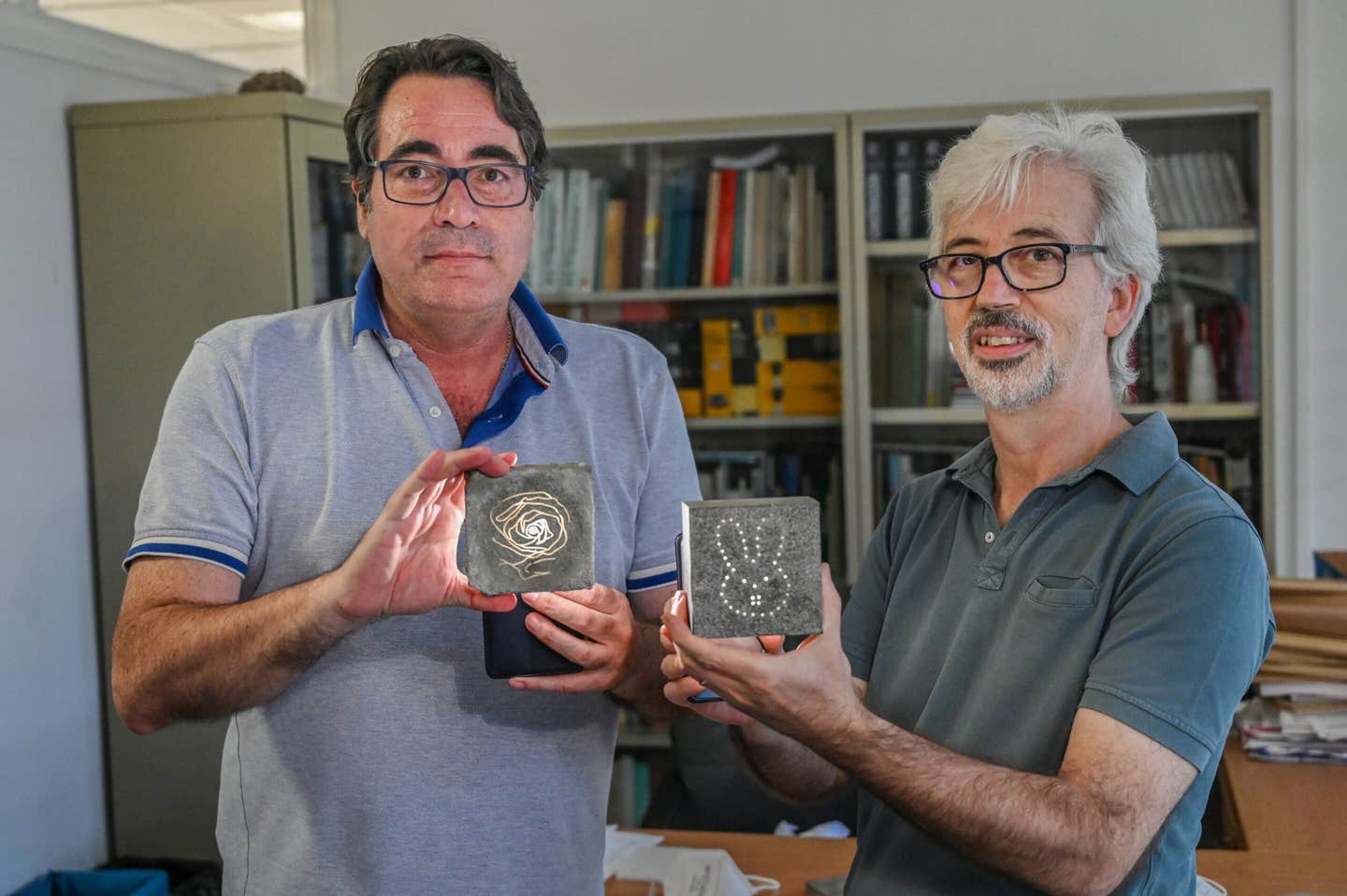Translucent concrete makes it possible to create customised facades at low cost
Two researchers have designed and patented a new product that promises to revolutionize construction and other sectors.

[Oct 11, 2021: Universitat Politècnica de València]
Any design we can imagine can be 3D-printed and incorporated into the façade construction process. (Credit: Universitat Politècnica de València)
Two researchers from the Universitat Politècnica de València (UPV) –José Ramón Albiol Ibáñez and Miguel Sánchez López– have designed and patented a new product that promises to revolutionize construction and other sectors. This is HTRANS, a pioneering translucent concrete that allows designs printed in 3D with a transparent resin to be incorporated inside it, and thus to create façades, paving, etc. à la carte.
"Any design we can imagine can be 3D-printed and incorporated into the façade construction process. With HTRANS we can create structures including ground-breaking images, in many different shapes: from the logo of our company to a reproduction of a work of art, a person's face or the skyline of a city. We can also include luminous devices, such as LEDS, to illuminate the structure," says José Ramón Albiol, a professor at the School of Building Engineering of the Universitat Politècnica de València.
All this, at a much lower cost than conventional translucent concrete. Translucent concrete is not a new thing, but it has to be handcrafted, which has a direct impact on its high final cost.
"This is where one of the main advantages of HTRANS lies. What makes our invention stand out is the inclusion of the 3D-printed transparent resin parts inside the concrete. Thanks to this, and to the use of filaments other than optical fiber, we can automate production and significantly reduce production time, which translates into a saving in the final cost of the product of about 80%," says Miguel Sánchez, a professor at the Department of Computing Engineering (DISCA) of the Universitat Politècnica de València.
HTRANS also incorporates reinforcement elements of different thicknesses that guarantee the strength of the concrete parts. "The parts printed in 3D with the design that we want to be seen also incorporate an internal substructure, which ensures the structural rigidity of the part," adds José Ramón Albiol. Both this configuration and the materials used ensure that the quality and definition of the façade images are optimal, improving the three-dimensional appearance of the final product.
Additionally, HTRANS can incorporate permanent or intermittent lighting in any area, using batteries that are charged via an external power supply, as well as wireless charging devices.
"It is an innovative solution, unique in the world, easy to transport and install, which has great potential for the construction and the furniture industries, or for advertising. It can also be used in design objects such as lamps or decorative elements, kitchen furniture and countertops, outdoor and indoor flooring, etc.," says Albiol.
Regarding the production process, the UPV researchers emphasize its simplicity: first we have the 3D printed pieces with the designs that we wish to incorporate into our product, which can be a façade, flooring, etc. "These are included in the formwork, then the concrete is poured and, once it is inside them, the two sides are polished and we have the final product, including the image, design, etc. of our choosing. All this, in record time and at a much lower cost than today," they conclude.
Like these kind of feel good stories? Get the Brighter Side of News' newsletter.
Tags: #New_Innovations, #Building_Materials, #Concrete, #3D_Printing, #Science, #Construction, #Technology, #The_Brighter_Side_of_News
Joseph Shavit
Head Science News Writer | Communicating Innovation & Discovery
Based in Los Angeles, Joseph Shavit is an accomplished science journalist, head science news writer and co-founder at The Brighter Side of News, where he translates cutting-edge discoveries into compelling stories for a broad audience. With a strong background spanning science, business, product management, media leadership, and entrepreneurship, Joseph brings a unique perspective to science communication. His expertise allows him to uncover the intersection of technological advancements and market potential, shedding light on how groundbreaking research evolves into transformative products and industries.



